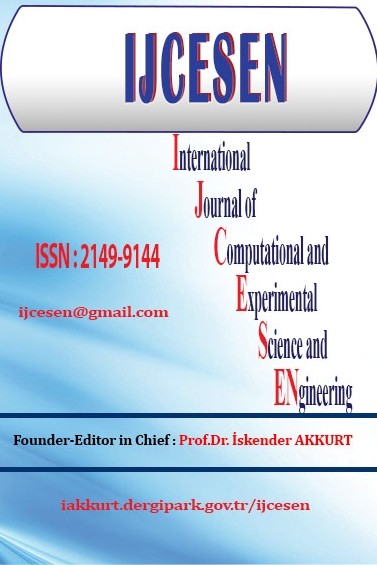Reactive Compatibilization of Poly(lactic acid) and Polycarbonate Blends Through Catalytic Transesterification Reactions
Reactive Compatibilization of Poly(lactic acid) and Polycarbonate Blends Through Catalytic Transesterification Reactions
Transesterification compatibilization, catalyst, nanocomposite,
___
- [1] Y. Chen, , Y. Peng, W. Liu, G. Zeng, J. Yang, X. Yan, The effect of various catalyzers on transesterification in reactive blending PC/PLA blends, Advanced Materials Research 741(2013) 24-27.DOI :10.4028/www.scientific.net/AMR.741.24
- [2] Y. Zhou, L. Luo, W. Liu, Y. Chen,Preparation and characteristic of PC/PLA/TPU blends by reactive extrusion, Advances in Materials Science and Engineering 6(2015) 1-9
- [3] C. Liu, S. Lin, C. Zhou, W. Yu, Influence of catalyst on transesterification between poly(lactic acid) and polycarbonate under flow field, Polymer 54(2013) 310-319.DOI: 10.1016/j.polymer.2012.11.047
- [4] V.T. Phuong, M.B. Coltelli, P. Cinelli, M. Cifelli, S. Verstichel, A. Lazzeri, Compatibilization and property enhancement of poly(lactic acid)/polycarbonate blends through triacetin-mediated interchange reactions in the melt, Polymer 55(2014)4498-4513.DOI:10.1016/j.polymer. 2014. 06.070
- [5] N. Chelghoum, M. Guessoum, M. Fois, N. Haddaoui, Contribution of catalytic transesterification reactions to the compatibilization of PLA/PC blends: thermal, morphological and viscoelastic characterization, Journal of Polymers and the Environment 26 (2018) 342-354. DOI: 10.1007/s10924-017-0950-4
- [6] Y. Wang, Q. Zhang, Q. Fu, Compatibilization of immiscible poly(propylene)/polystyrene blends using clay», Macromolecular rapid communications, 24(2003)231-235.DOI: 10.1002/marc.200390026
- [7] J. S. Hong, Y. K. Kim, K. H. Ahn, S. J. Lee, C. Kim,Interfacial tension reduction in PBT/PE/clay nanocomposite, Rheological Acta 46(2007)469-478.DOI:10.1007/s00397-006-0123-1
- [8] L. As’habi, S.H. Jafari, H.A. Khonakdar, R. Boldt, U. Wagenknecht, G. Heinrich, Tuning the processability, morphology and biodegradability of clay incorporated PLA/LLDPE blends via selective localization of nanoclay induced by melt mixing sequence. Express Polymer Letters. 7(2013) 21–39.DOI: 10.3144/expresspolymlett.2013.3
- Yayın Aralığı: 4
- Başlangıç: 2015
- Yayıncı: Prof.Dr. İskender Akkurt
Full reference video quality evaluation using foveated vision and multiple fixation points
Mario VRANJEŠ, Snježana RİMAC-DRLJE, Denis VRANJEŠ
Investigation of Various Infectious Diseases in Turkey by Mathematical Models SI and SIS
Excitation Functions for the Proton Irradiation on 45ScTarget
Susan SHUKUR NOORI, İskender AKKURT, Nurdan Karpuz DEMIR
Environmental Radiation Doses from Patients Undergoing Tc-99m DMSA Cortical Renal Scintigraphy
Osman GÜNAY, Mucize SARIHAN, Evrim ABAMOR, Onur YARAR
Experimental Raman study of N-phenyl-3-para nitrophenyl isoxazolidine-5-carbonitrile
Karima BOUDHAR, Mahdi DEBIECHE
Unimodal Optimization of Axially Compressed Shear Deformable Columns
A Framework for Query Optimization Algorithms for Biological Data
Khalid Mohammad JABER, Nesreen A. HAMAD, Fatima M. QUIAM
